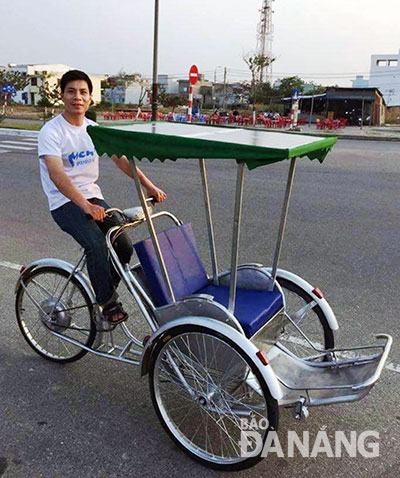Solar-powered cyclo developed by local students
A contest to design products which feature energy-saving systems and responses to climate change recently concluded in Da Nang.
The event was jointly organised by the municipal Department of Science and Technology and the Da Nang University of Science and Technology (DUT). The aim was to encourage DUT’s students to create designs for products operated by clean and environmentally-friendly energy sources to reduce environmental pollution.
 |
| The solar energy-run cyclo |
The trio of Pham Hong Truong, Nguyen Thanh Minh, and Le Hoang took the 2nd prize for their design of ‘A Cyclo Run on Solar Energy’. The design aimed to appeal to the whole community to protect the environment by using natural energy.
Truong said “The cyclo is considered an indispensable means of transport in Vietnamese tourism culture. However, most of the cyclo riders are not young people, and they have to exert lots of energy powering the vehicle. This is the reason why my team decided to attach a solar-powered engine to a cyclo”.
Another team member, Minh, said “Our cyclo model boasts high durability and simple assembly procedures, and it is very easy to operate. We would like to help the city develop solar-powered cyclos to replace the traditional ones through our invention”.
The team members added that this solar-powered engine could also be used on 3-wheeled vehicles for disabled people.
Although the design of the new cyclo has been greeted favourably, it still has a few shortcomings. In particular, the hard solar panel which would need to be installed on top of each cyclo will make the vehicle heavier and not so aesthetically pleasing.
The Director of the city’s Tourism Promotion Centre, Mr Nguyen Xuan Binh, has recently announced that his centre will ask the local authorities to develop 10 solar-powered cyclos as a pilot in the city. However, he stressed the need for the team to enhance the quality and aesthetics of the vehicle, as well as to recalculate the cost of producing their invention.




